
Watch short for this article (5 slides)
The Hidden Engine: How the World Ocean Drives, Regulates, and Reshapes Global Climate
When contemplating Earth's climate, our minds often conjure images of atmospheric phenomena – swirling clouds, biting winds, scorching sun. However, the true powerhouse regulating our planet's climate system lies largely unseen within the vast, deep expanses of the World Ocean. Covering over 70% of the Earth's surface and containing 97% of its water, the ocean acts as a colossal thermal reservoir, a critical component of the carbon cycle, and the driver of massive heat-transporting currents that profoundly influence weather patterns from regional to global scales. Is the ocean merely a participant, or is it the primary conductor orchestrating Earth's climate symphony? Let's dive deep into the science.
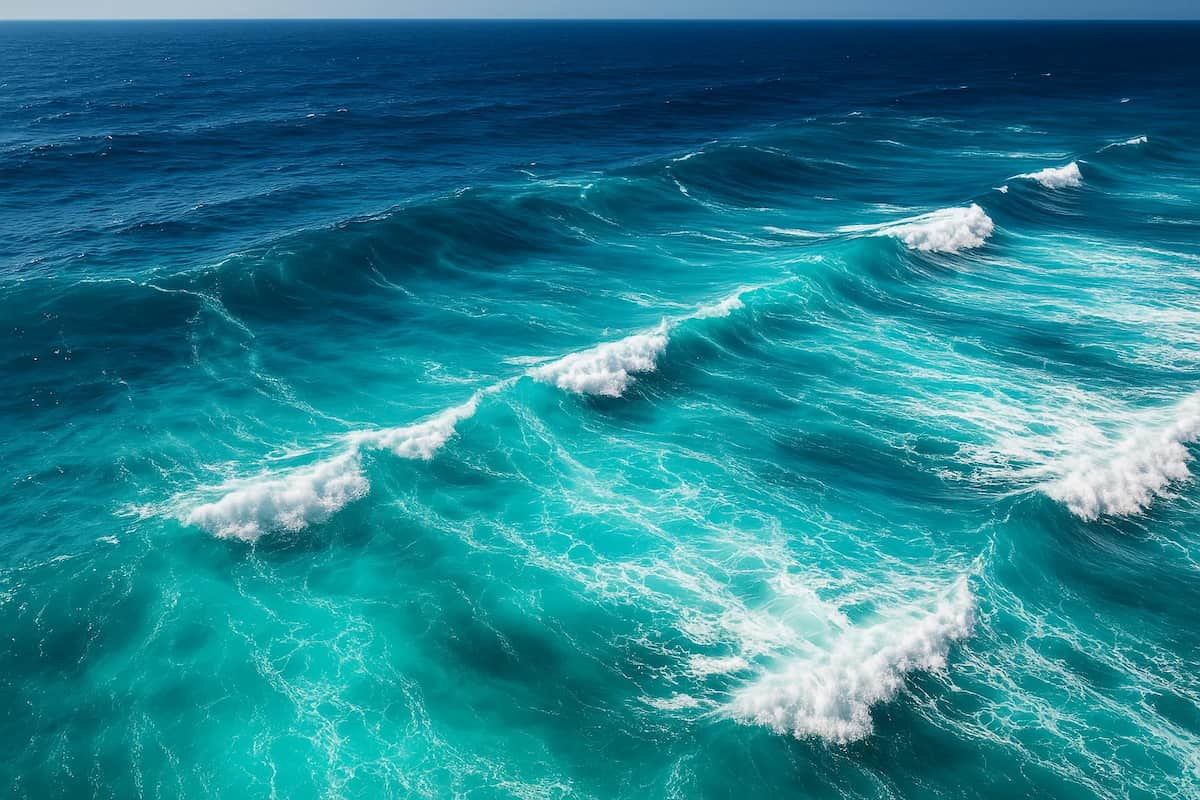
Earth's Great Heat Moderator: The Ocean's Thermal Properties
The ocean's fundamental role in climate regulation begins with the unique physical properties of water, particularly its remarkably high specific heat capacity. This means water can absorb a tremendous amount of heat energy with only a small increase in its own temperature – roughly four times more energy is required to raise the temperature of 1 kilogram of water by 1°C than is needed for 1 kilogram of air. Conversely, it releases this stored heat slowly.

- Buffering Temperature Extremes: The ocean has absorbed over 90% of the excess heat trapped by greenhouse gases since the 1970s (Source: IPCC SROCC Chapter 1). Without this immense absorption capacity, global atmospheric temperatures would have risen far more dramatically. This property explains why coastal regions typically experience milder climates – cooler summers and warmer winters – compared to continental interiors at the same latitude. The ocean acts like a giant thermal flywheel, smoothing out temperature fluctuations.
- Vertical Mixing (Thermohaline Dynamics): The ocean isn't static. Wind-driven surface mixing and large-scale thermohaline circulation (driven by differences in temperature and salinity) cause vertical movement of water masses. Warmer surface waters mix with cooler, deeper waters. This distributes heat vertically through the water column (which averages nearly 4,000 meters or 13,000 feet deep), further enhancing the ocean's heat storage capacity. This mixing also brings nutrient-rich deep waters to the sunlit surface (upwelling), fueling marine ecosystems.
Global Conveyor Belts: Ocean Currents Redistributing Heat and Influencing Weather
Beyond simply absorbing heat, the ocean actively transports it across vast distances via a complex network of currents, profoundly shaping regional and global climate patterns.
Example #1: The Gulf Stream and the Atlantic Meridional Overturning Circulation (AMOC)
The Gulf Stream is perhaps the most famous component of the larger Atlantic Meridional Overturning Circulation (AMOC), a critical "conveyor belt."
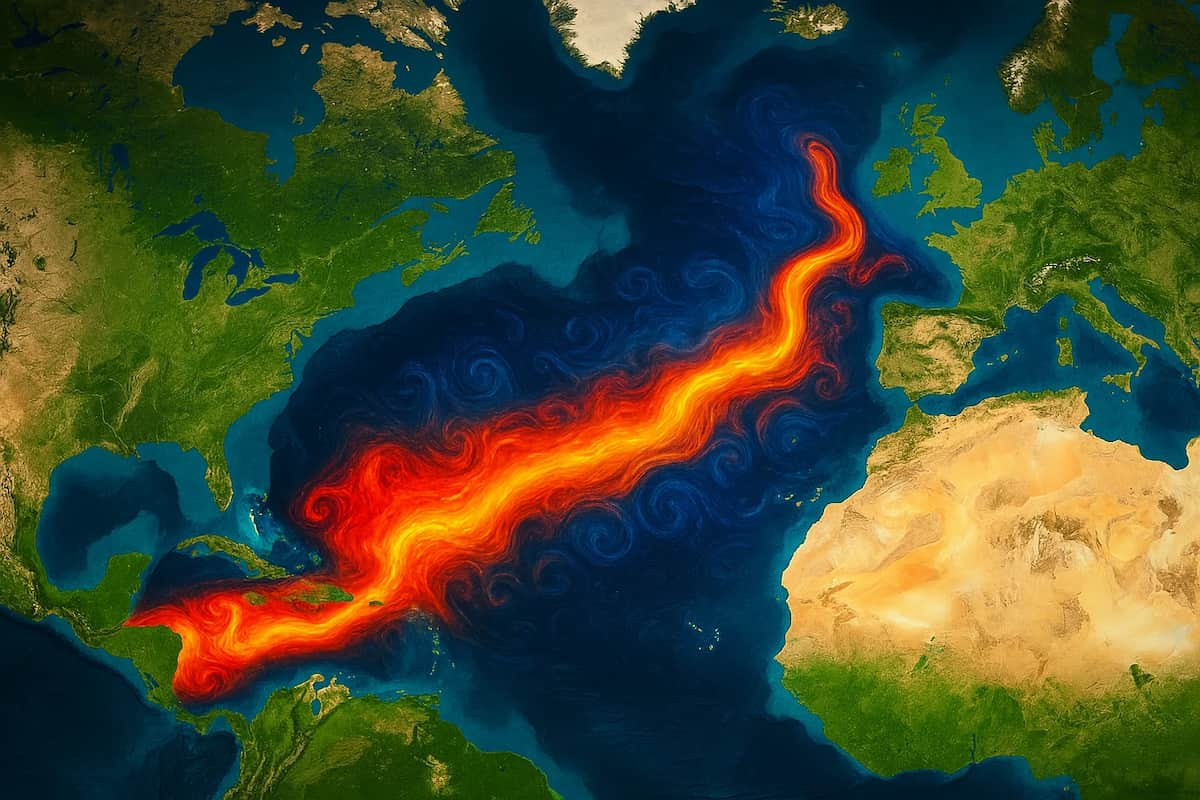
- Mechanism: Originating in the warm waters of the Gulf of Mexico and Caribbean, the Gulf Stream flows northward along the eastern US coast, transporting enormous volumes of warm water – estimated at its peak to be over 100 Sverdrups (100 million cubic meters per second), more than all the world's rivers combined. As this warm, salty water moves north, it releases heat into the atmosphere, particularly benefiting Western Europe.
- Climate Impact: London, UK (approx. 51.5°N), enjoys significantly milder winters than, say, Calgary, Canada (approx. 51.0°N), largely thanks to the Gulf Stream's heat transport. This warm, moist air influences precipitation patterns and temperature across the region.
- Vulnerability and Concern: The AMOC is driven by density differences: warm, salty surface water flows north, cools, becomes denser, and sinks in the high North Atlantic, returning south as deep water. Climate change poses a threat. Increased meltwater from Greenland introduces freshwater, reducing surface salinity and density, potentially slowing or disrupting this sinking process. Scientific evidence suggests the AMOC has weakened in recent decades, raising concerns about potential abrupt shifts in weather patterns, including colder European winters, altered rainfall, and potentially more rapid sea-level rise along the US East Coast. (Source: UK Met Office - Gulf Stream; Source: Nature Climate Change - AMOC Stability Study)
Example #2: El Niño-Southern Oscillation (ENSO) - A Pacific Phenomenon with Global Reach
ENSO is a recurring climate pattern involving changes in sea surface temperatures across the central and eastern tropical Pacific Ocean.
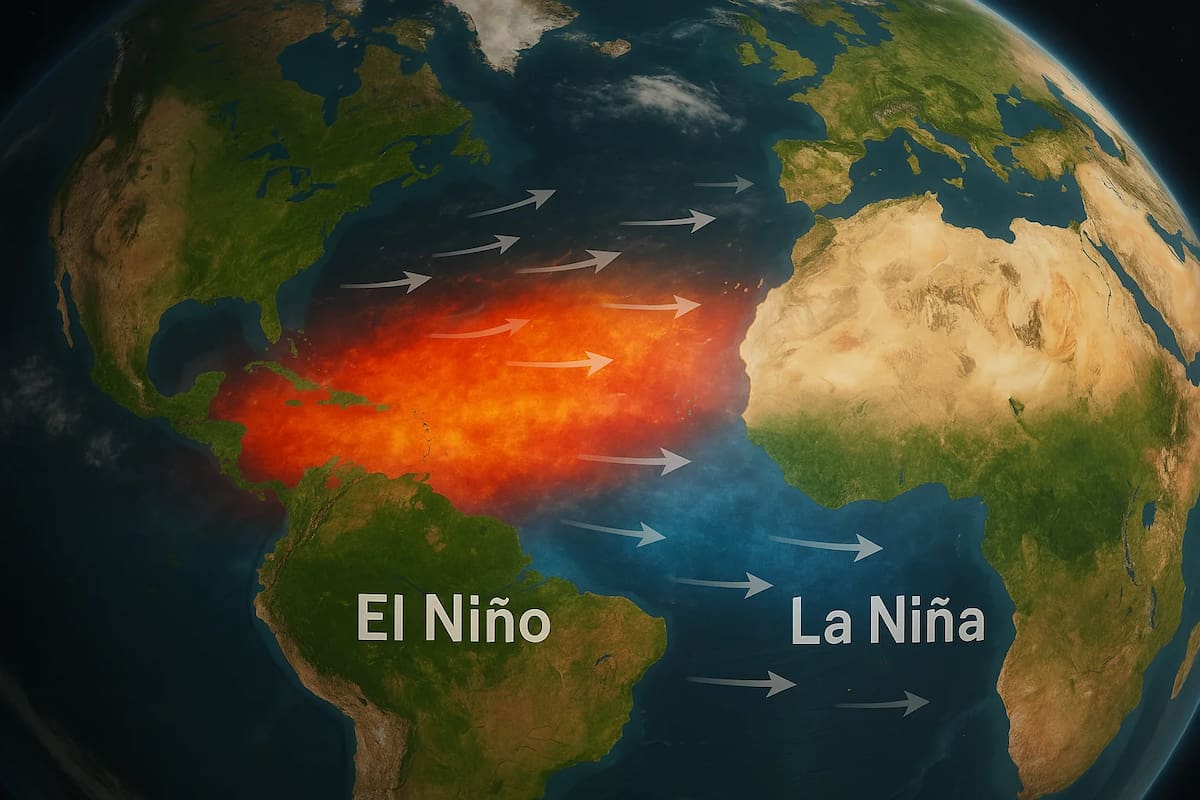
- Phases:
- El Niño: Characterized by unusually warm sea surface temperatures (typically 0.5°C or more above average for several months) in the central and eastern Pacific. This weakens the normal east-to-west trade winds and alters the Walker Circulation (an atmospheric circulation cell). Impacts often include increased rainfall and flooding in western South America (Peru, Ecuador) and droughts in Southeast Asia and Australia.
- La Niña: Characterized by unusually cool sea surface temperatures in the same region. Trade winds strengthen, often leading to opposite effects: drought in parts of South America and heavy rainfall/flooding in Australia and Southeast Asia.
- Neutral: Conditions are near average.
- Global Teleconnections: ENSO's influence extends far beyond the Pacific. It impacts hurricane frequency in the Atlantic (El Niño tends to suppress it, La Niña enhance it), affects monsoon seasons in Asia and Africa, influences temperature patterns across North America, and can even disrupt fisheries (like the anchovy fishery off Peru) and global agricultural yields. (Source: NOAA Climate.gov - ENSO)
The Ocean's Role in the Carbon Cycle: A Critical Sink Under Stress
The ocean plays a vital role in regulating the amount of carbon dioxide (CO₂), a major greenhouse gas, in the atmosphere.
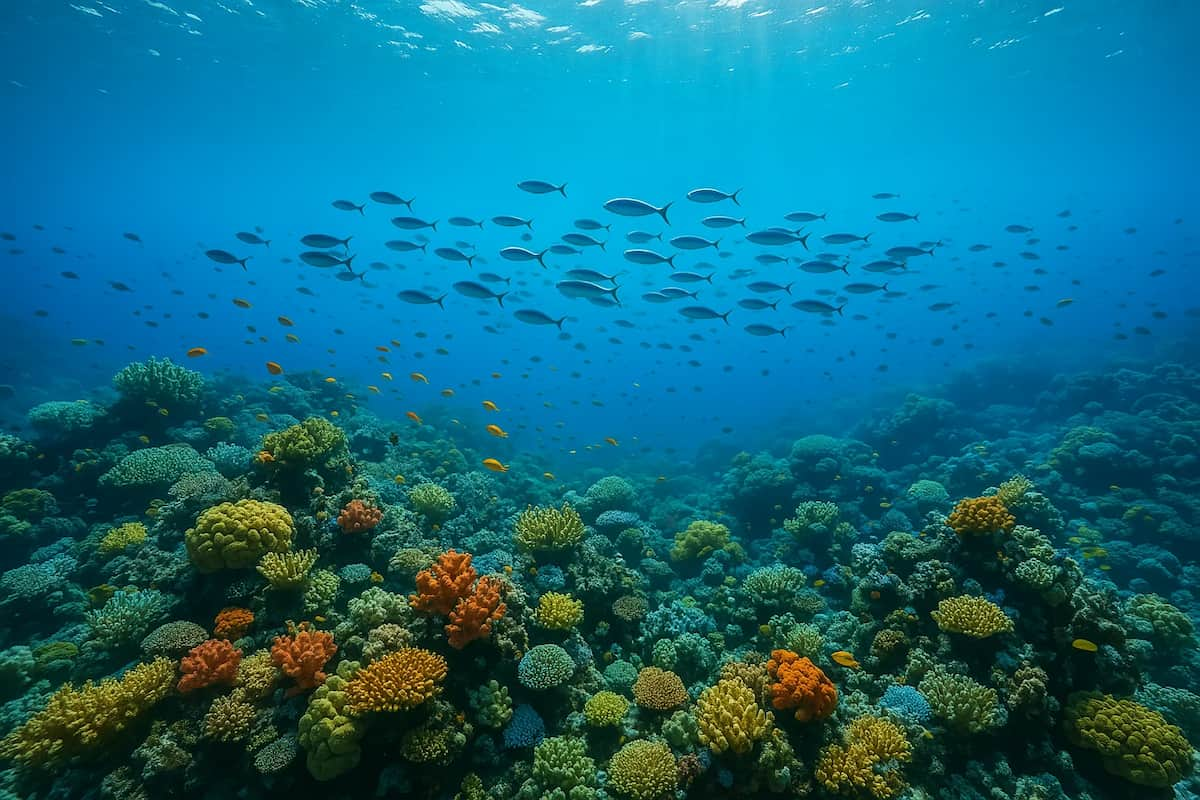
- Carbon Sequestration Mechanisms:
- Solubility Pump: CO₂ directly dissolves from the atmosphere into surface seawater. Colder water can hold more dissolved CO₂ than warmer water. This dissolved CO₂ can then be transported to the deep ocean via circulation patterns.
- Biological Pump: Marine phytoplankton (microscopic plants) consume CO₂ during photosynthesis. When these organisms die, or are consumed and excreted by other organisms, some of this carbon sinks to the deep ocean in organic matter ('marine snow'). A portion is sequestered in deep-sea sediments over geological timescales.
- Absorption Capacity: The ocean has absorbed approximately 25-30% of the anthropogenic CO₂ emissions released since the industrial revolution, significantly mitigating the rate of atmospheric warming. (Source: Ocean & Climate Platform - Carbon Pump)
- Threats from Climate Change:
- Warming Waters: As ocean temperatures rise, the solubility of CO₂ decreases, reducing the ocean's capacity to absorb more from the atmosphere – a positive feedback loop potentially accelerating warming.
- Ocean Acidification: Absorbed CO₂ reacts with seawater to form carbonic acid (H₂CO₃), which lowers the water's pH (making it more acidic) and reduces the availability of carbonate ions (CO₃²⁻). This makes it harder for organisms like corals, shellfish, and some plankton to build their shells and skeletons (made of calcium carbonate, CaCO₃). This threatens entire marine ecosystems and can further weaken the biological pump. The average surface ocean pH has already dropped by about 0.1 units since pre-industrial times, representing a ~30% increase in acidity. (Source: NOAA - Ocean Acidification)
Compounding Pressures: Pollution and Ecosystem Health
Human activities introduce pollutants that further compromise the ocean's health and its climate-regulating functions.
- Plastic Pollution: Vast amounts of plastic waste accumulate in oceans, forming large garbage patches (like the Great Pacific Garbage Patch). Plastics break down into microplastics, which enter the marine food web. These particles can harm marine life directly, potentially adsorb and transport toxins, and impact the health and function of plankton, which are critical for both the food web and the biological carbon pump.
- Nutrient Runoff and Dead Zones: Excess nutrients (nitrogen, phosphorus) from agriculture and sewage lead to eutrophication – algal blooms that consume oxygen when they decompose, creating hypoxic "dead zones" lethal to most marine life. This disrupts ecosystems and can alter local carbon cycling.
- Chemical and Oil Pollution: Industrial discharges and oil spills introduce toxic substances that harm marine organisms and can persist in the environment, impacting ecosystem resilience.
"A healthy, resilient ocean ecosystem is fundamental to its ability to regulate climate. Degrading marine environments through pollution weakens these natural systems at a time when we need their buffering capacity most." - Marine Ecology Principle
Furthermore, marine phytoplankton produce an estimated 50-80% of the oxygen we breathe via photosynthesis. Damaging these ecosystems has far-reaching consequences beyond climate regulation. (Source: NOAA - Ocean Oxygen Production)
Rising Tides: Sea Level Rise and Coastal Impacts
Global warming is causing global mean sea level to rise through two primary mechanisms:
- Thermal Expansion: As ocean water warms, it expands in volume. This has been the dominant contributor to sea-level rise observed so far.
- Melting Land Ice: Runoff from melting glaciers and ice sheets (primarily Greenland and Antarctica) adds freshwater to the ocean, increasing its total volume. This contribution is accelerating.
Global mean sea level has risen by about 21-24 centimeters (8-9 inches) since 1880, with the rate accelerating in recent decades (Source: NOAA Climate.gov - Sea Level Rise). This poses significant threats:
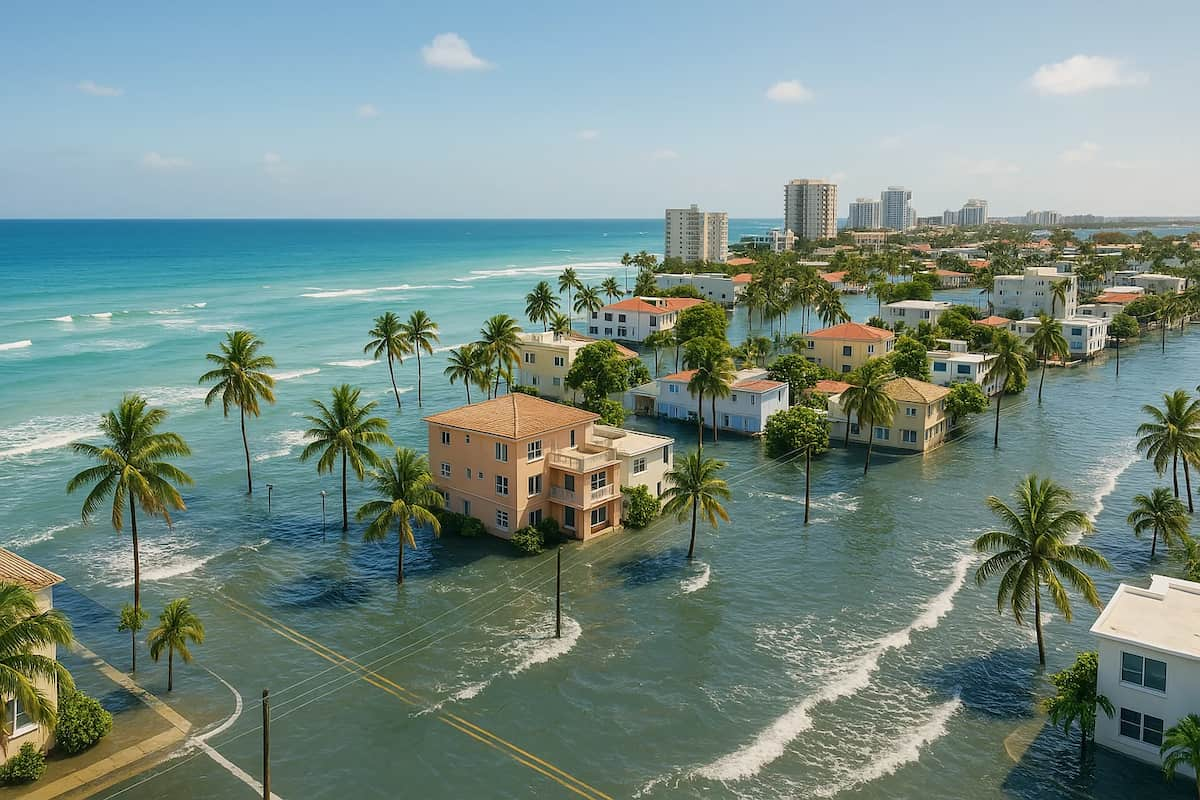
- Coastal Inundation: Increased frequency and severity of coastal flooding ("sunny day flooding"), erosion, and permanent submergence of low-lying land.
- Threats to Infrastructure and Communities: Ports, cities, agricultural lands, and critical infrastructure are at risk. Small island developing states face existential threats.
- Saltwater Intrusion: Rising sea levels can push saltwater into coastal aquifers (underground freshwater sources) and estuaries, contaminating drinking water supplies and harming agriculture.
- Economic and Social Disruption: Potential for large-scale displacement of populations, loss of property, damage to tourism and fisheries, and significant adaptation costs.
Monitoring the Deep: Technology and Ocean Science
Understanding the ocean's intricate role requires sophisticated monitoring and research:
- Satellite Altimetry: Missions like Jason-3, Sentinel-6 Michael Freilich (NASA/ESA/NOAA/EUMETSAT collaborations) use radar altimeters to precisely measure sea surface height, tracking sea-level rise and ocean currents globally. (Source: NASA Sea Level Portal)
- Argo Floats: A global array of over 4,000 autonomous profiling floats drift with currents and periodically dive to depths of 2,000 meters (6,500 feet), measuring temperature and salinity, providing crucial data on ocean heat content and circulation patterns in near real-time. (Source: Argo Program)
- Oceanographic Research Vessels: Ships conduct detailed surveys, collect water samples, deploy moorings with sensors, and map the seafloor, providing high-resolution data on physical, chemical, and biological processes.
- Climate Models: Sophisticated computer simulations (like those used by the IPCC) integrate ocean dynamics with atmospheric, land surface, and ice processes to project future climate scenarios under different emission pathways.
Conclusion: The Ocean - Our Climate's Indispensable Ally, Under Threat
The World Ocean is far more than a passive body of water; it is an active, dynamic, and indispensable component of the Earth's climate system. Its immense heat capacity buffers atmospheric temperature swings, its currents act as global heat distributors influencing weather worldwide, and its biological and chemical processes sequester vast amounts of carbon dioxide. It is, in essence, the planet's primary climate regulator.
However, this vital system is under unprecedented stress from human activities. Rising temperatures, ocean acidification, deoxygenation, pollution, and overexploitation are weakening the ocean's ability to perform these critical functions. We risk transforming this stabilizing force into an amplifier of climate change through disrupted currents, reduced carbon uptake, and accelerating sea-level rise.
Protecting the ocean is not merely an environmental issue; it is fundamental to maintaining a stable climate, ensuring global food security, protecting coastal communities, and preserving the very habitability of our planet. Recognizing the ocean's central role and taking decisive action to mitigate climate change and reduce direct pressures on marine ecosystems is not just prudent - it is essential for our collective future.